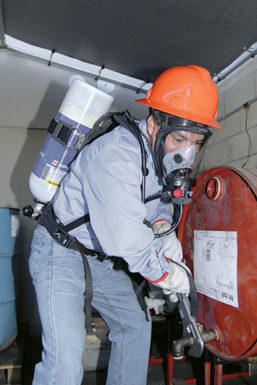Identifying occupational histoplasmosis

Photo: HSP Americas
Histoplasmosis is a non-contagious, non-transmittable infectious disease caused by inhaling the spores of a fungus. The fungus, Histoplasma capsulatum, grows best in nitrogen-rich soil, especially soil enriched with bat or bird manure. It can be found throughout the world, particularly in the central and eastern parts of the United States. When this soil is disturbed by workers, the spores can become airborne or aerosolized.
Employees working at a jobsite where the fungus is present can develop histoplasmosis, and people with weakened immune systems are at greatest risk for it, according to NIOSH. Construction and demolition workers, farmers, heating and air-conditioning installers, pest-control workers, and roofers are at greatest risk for the disease.
Symptoms
NIOSH notes that most infected people do not experience symptoms, but if symptoms occur, they generally appear three to 17 days after exposure. Symptoms of histoplasmosis include:
- A mild flu-like respiratory illness
- Chest pain
- Dry cough or shortness of breath
- Headache
- Chills
Mild cases of the disease generally do not require treatment. However, the most severe form of this disease, called disseminated histoplasmosis, can be fatal and may require antifungal medicine, NIOSH states.
Prevention
Soil testing for H. capsulatum spores is expensive and impractical, according to NIOSH. Instead, supervisors should assume the soil is contaminated and take appropriate precautions.
Tips on how to avoid contracting the disease include:
- Practice wet-method cleaning for dust suppression.
- Remove bats and birds from the work location, and seal off entry points.
- Wear necessary personal protective equipment, such as a respirator.
- Before beginning a job that could disturb any material that might be contaminated by H. capsulatum, workers should be informed in writing of the risk factors that increase the chances of developing histoplasmosis.

